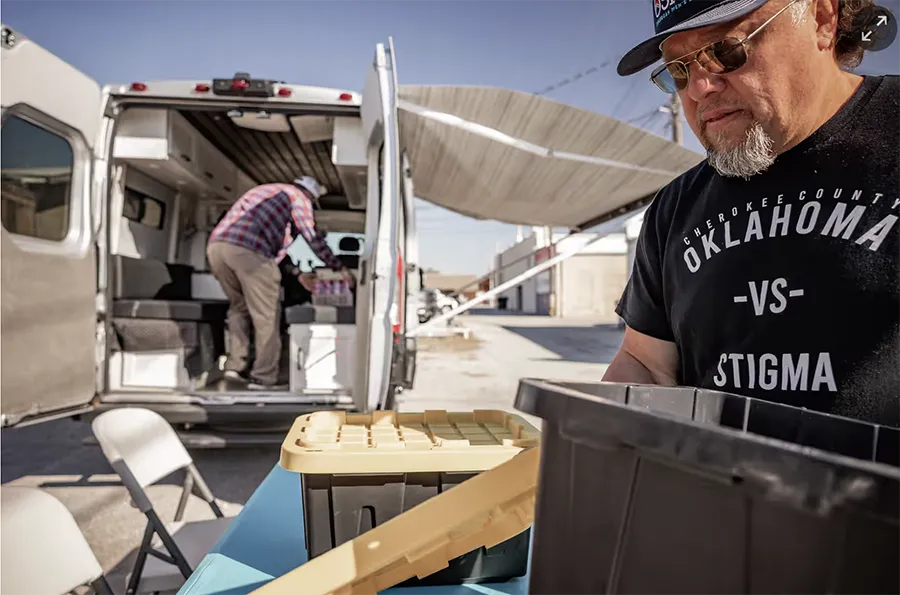November 19, 2024
Cherokee Nation's mobile drug unit delivers life-saving care to some of its most remote-living members

A tribal member unloads the Cherokee Nation harm-reduction van. (Photo by Shane Brown, Native News Online via The Guardian.)
A new program in Oklahoma is using a mobile drug unit to distribute harm reduction and drug safety supplies to rural Cherokee Nation members struggling with addiction, reports Elyse Wild of The Guardian. The traveling service is part of the tribe's overall "Native people taking care of Native people" effort to address the severe risks and lack of access facing Native Americans with substance-use disorders.
The drug unit van can be the first point of contact for an addicted tribal member to receive life-saving supplies and education. Coleman Cox, who drives the unit, stops along drug "hot spots" in remote northern Oklahoma and sets up tables "with black bins of naloxone, a drug to reverse opioid overdoses, along with testing strips, clean syringes and wound-care supplies," Wild writes. "The mobile unit typically sees 16 regulars from the community, he says. Some days, no one comes. It all depends on the patterns of drug use and the current drug supply."
The Cherokee Nation "is the largest of the tribes, with more than 450,000 citizens worldwide and 141,000 people living within its sovereign boundaries," Wild explains. "Mobile harm reduction is uniquely suitable for tribal nations. . . where culture and connection are measures of health, harm reduction mitigates the isolation of active addiction." Cox told Wild, "Native people heal as a community.”
With the mobile unit, the Cherokee Nation can reach more remote members who need physical and cultural help coping with addiction. "The effect of culture on addiction health in Native communities is not purely anecdotal," Wild adds. "A doctoral research project conducted by the University of Arizona in 1992 with the Shuswap First Nation community in Alkali Lake, British Columbia, found that employing substance abuse treatment with cultural practices such as sweat lodges, pipe ceremonies, drumming, singing and powwows were instrumental in reducing the tribe’s rate of drug and alcohol abuse by 95% from 1970 to 1985."